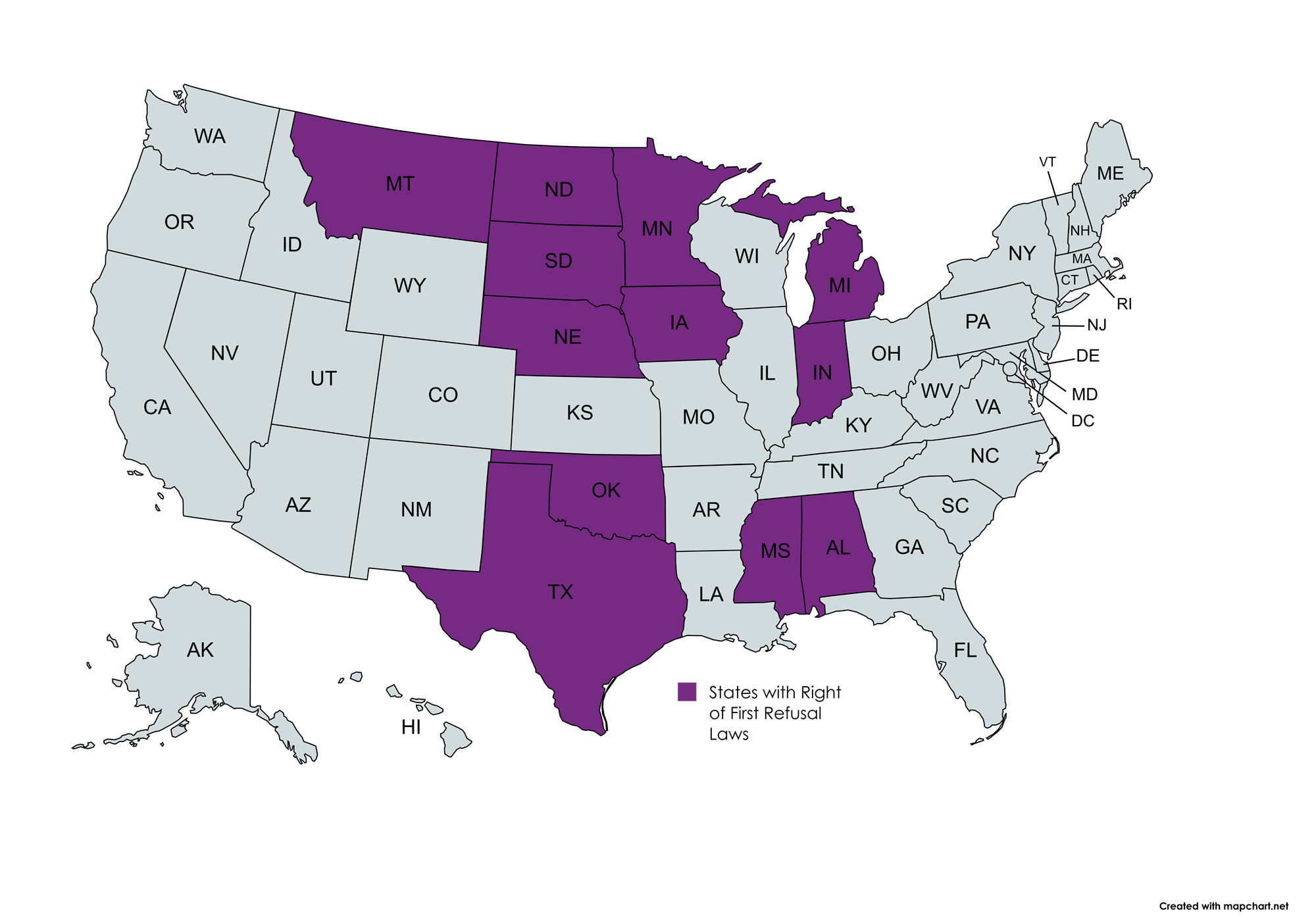The recent federal court ruling in LSP Transmission Holdings II, LLC v. Huston has brought renewed attention to the ongoing debate surrounding Right of First Refusal (ROFR) laws in the electric transmission sector. As states grapple with balancing local utility interests and fostering competitive markets, recent caselaw highlights key legal and business considerations for regional and interregional transmission line projects.
What Are ROFR Laws? Understanding Their Impact on Transmission Development
ROFR laws grant incumbent utilities and transmission providers the first opportunity to construct, own, and maintain new transmission lines within their service territories before those projects are opened to competitive bidding.
In 2011, the Federal Energy Regulatory Commission (FERC) issued Order No. 1000, eliminating federal ROFR provisions and encouraging competitive bidding for large transmission projects. While the order aimed to foster an open marketplace, it allowed states to enact their own ROFR statutes, leading to a patchwork of regulations across the country.
State ROFR Laws and Their Role in Transmission Planning
To trigger state ROFR laws, proposed transmission projects – whether led by incumbent utilities or merchant transmission providers – must be identified as needed by a regional planning authority. Why is this important? Transmission projects approved by regional planning authorities qualify for cost allocation across all beneficiaries regardless of state boundaries or utility service area boundaries. ROFR laws have been adopted by several states, including states served by the Midcontinent Independent System Operator (MISO) such as Minnesota.
 Do ROFR Laws Help or Harm Transmission Development?
Do ROFR Laws Help or Harm Transmission Development?
Supporters of ROFR laws contend incumbent utilities would have more realistic proposals because they understand the local landscape and are best equipped to build transmission in their state. Building large transmission projects is already an extensive undertaking and removing the bidding process could allow them to be built in less time.
These laws have also faced criticism for restricting competition and driving up costs. Opponents also argue that ROFR laws present a major barrier to building interregional transmission lines, which are typically large projects that cross multiple states. Because of their size and required investment, they are often too big for an individual utility or transmission developer to accomplish alone, which suggests innovative partnerships between utilities, developers, tribes, and other governmental entities may be necessary to accomplish such projects. State ROFR laws complicate these efforts.
Minnesota’s ROFR Law: Court Rulings and Legislative Efforts
Minnesota’s ROFR law was upheld by the U.S. Court of Appeals for the Eighth Circuit, which affirmed a federal trial court decision, in LSP Transmission Holdings, LLC v. Sieben. LSP Transmission Holdings, LLC (LSP-Minnesota), a transmission developer, argued that Minnesota’s ROFR law discriminates against out-of-state transmission companies, placing an undue burden on interstate commerce in violation of the dormant Commerce Clause. The dormant Commerce Clause prohibits states from enacting laws that mandate differential treatment of in-state and out-of-state economic interests that favor in-state interests.
However, the Eighth Circuit reasoned that Minnesota incumbents include utilities headquartered in other states and its ROFR law applies to all incumbents regardless of where they are headquartered, including an incumbent independent transmission provider. The court ruled that Minnesota’s ROFR law did not violate the dormant Commerce Clause.
Legislation was recently introduced in the Minnesota Legislature to repeal Minnesota’s ROFR law. If passed, the repeal could open Minnesota’s transmission market to greater competition, aligning the state with FERC’s push for competitive bidding.
Indiana’s ROFR Law: Legal Challenges and Court Rulings
In stark contrast to the Eight Circuit decision, the U.S. District Court for the Southern District of Indiana ruled in favor of LSP on December 6, 2024, in LSP Transmission Holdings II, LLC v. Huston. LSP Transmission Holdings II (LSP-Indiana) challenged the Indiana ROFR law on the basis that it violated the dormant Commerce Clause by favoring in-state incumbents and limiting competition from out-of-state entities. The Indiana Utility Regulatory Commission and incumbent utilities defended the law, stating that it promotes reliability and cost-effectiveness by leveraging existing infrastructure and local expertise.
The U.S. district court granted a preliminary injunction in favor of LSP-Indiana, finding that LSP-Indiana demonstrated a likelihood of success in proving Indiana’s ROFR law discriminates against out-of-state entities and, in balancing harms and public interest, LSP-Indiana’s motion for a preliminary injunction should be granted. Distinguishing this case from the Eighth Circuit decision, the court found that local presence should matter more than place of incorporation.
The preliminary injunction prevents the Indiana Utility Regulatory Commission from implementing Indiana’s ROFR law while the case proceeds; however, the decision to grant the injunction is under appeal before the U.S. Court of Appeals for the Seventh Circuit.
On February 4, 2025, LSP-Indiana filed a complaint against MISO before FERC alleging it is violating its tariff by failing to comply with the preliminary injunction granted by the federal judge for the Southern District of Indiana.
The Future of ROFR Laws: Legal and Regulatory Considerations for Transmission Projects
The recent developments in Minnesota and Indiana highlight the ongoing legal and regulatory uncertainty surrounding ROFR laws. While the Indiana ruling could signal a shift toward greater competition in the transmission sector, the conflicting decisions between federal courts create uncertainty for utilities, nonincumbent transmission developers, and policymakers alike. The ultimate outcome of these disputes will have significant implications for grid expansion affecting regional and interregional transmission projects.






